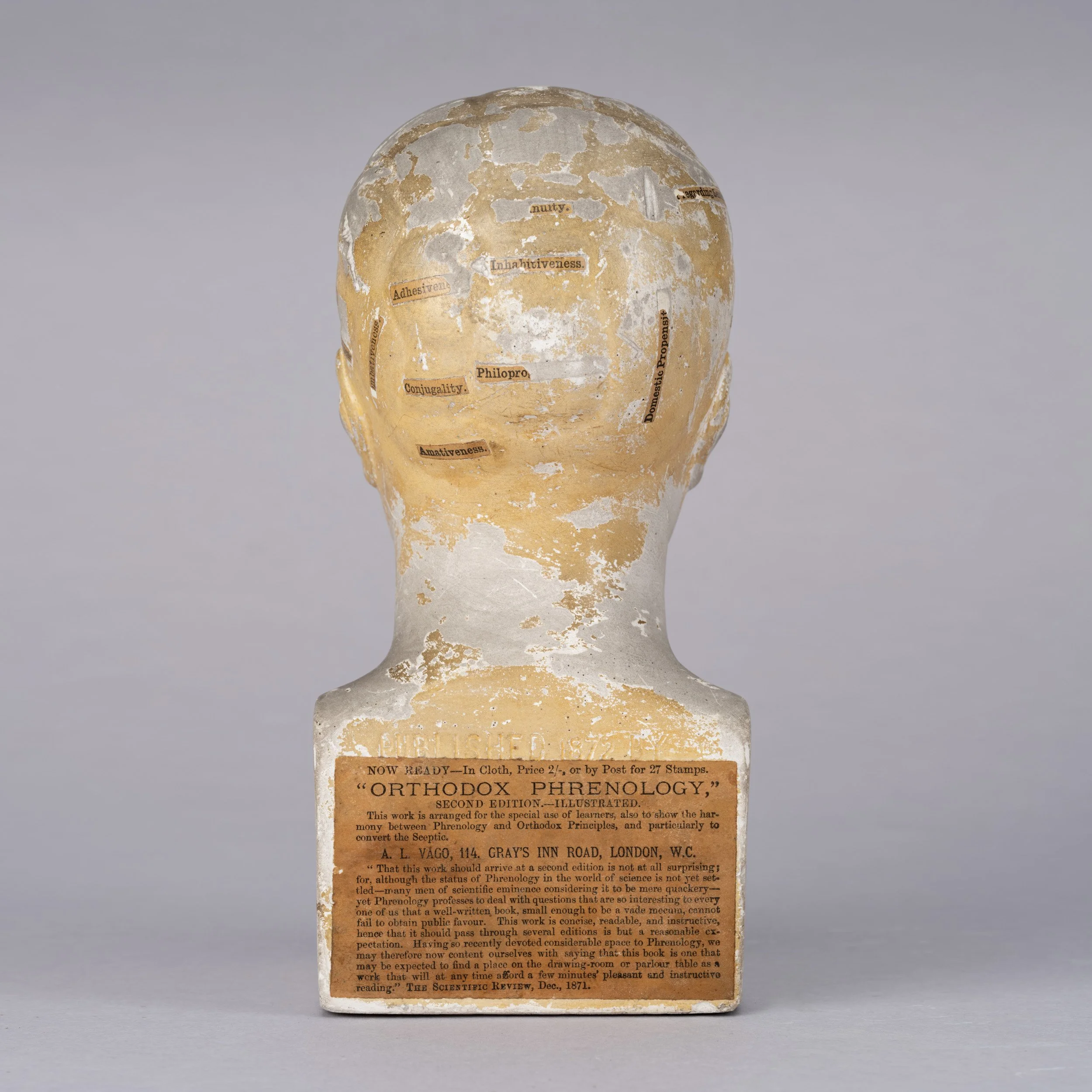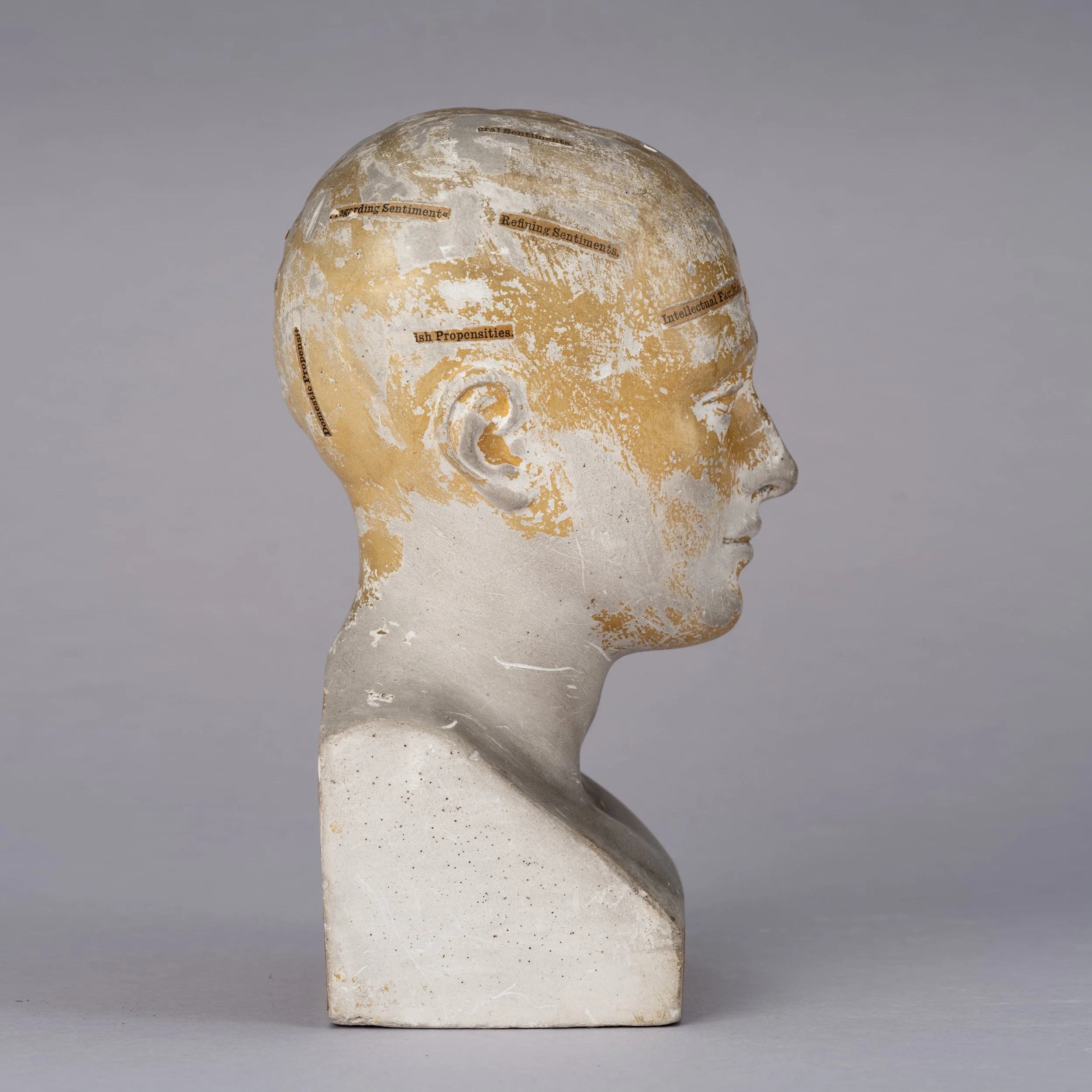




For more items related to phrenology, see the Death Mask or Post-Mortem Kit
In 1861, one patient’s occupation was listed as Professor of Phrenology and Mesmerism. Click to find out more about the illustrious Edwin Cockburn Garry.
Phrenology Head
Phrenology is a theory which argued that the shape of a person’s skull determined personality, and so feeling for bumps on the skull would help to account for a person’s character. Different parts of the brain were believed to control different traits, and therefore would be larger where these traits were present. The Viennese physician Franz Joseph Gall (1758-1828) had been the originator of this theory in the late 1700s, and it became more popular in the nineteenth century. He based his theory upon five main principles:
1. The brain is the organ of the mind.
2. Mental ability can be analysed into a definite number of independent faculties.
3. The faculties are innate, each seated in a definite section of the surface of the brain and measurable on the outside of the skull.
4. The size of each section is a measure of the degree to which a particular characteristic or personality trait affects an individual. i.e. a large bump on the left side of the head above the ear in the ‘destructive’ region would indicate that that person has a particularly destructive characteristics.
5. The correlation between the outer surface of the skull and the contour of the brain-surface underneath was enough that the outer skull could be examined to identify mental and emotional faculties without having to examine internally.
Following this, examination of the surface of the head supposedly enabled the doctor to determine a patients personality traits, character and criminality. This practice was called ‘reading bumps’. The phrenological model of the head was a popular tool of the trade for the Victorian doctor who subscribed to Phrenology. The model head was visibly divided into different regions of different shapes and sizes. The doctor could examine a patient and refer to the model to identify what a particular patients’ bumps and indents supposedly indicated.
Gall justified his theory under the assumption that areas of the brain (which have specific functions) that are used more regularly will grow, like a well exercised muscle, and therefore be visible on the outer skull. However, it is completely inaccurate to attribute a persons’ character to their physical features in this way.
Phrenology is a distinct from craniometry – the study of skull size, weight and shape, as well as physiognomy - the study of facial features. Phrenologists referred to Phrenology as ‘the only true science of the mind’ despite a lack of scientific research to support the theory.
A label on the front of this phrenology model head reads ‘approved by Fowler & Wells, New York’. Fowler and Wells was a phrenological publishing business, established by Orson and Lorenzo Fowler in 1835, who were later joined by Samuel Robert Wells in 1843. In the late nineteenth century, the company published many phrenological texts, as well as The Phrenological Journal. The company also saw the establishment of the American Institute of Phrenology, an educational institution, and later the British Phrenological Society in the 1880s.
Phrenology has now been discredited due to its lack of scientific evidence and the development of more sophisticated neuroscience methods. It is also problematic because of its links to eugenics and its use in supporting racist ideologies.